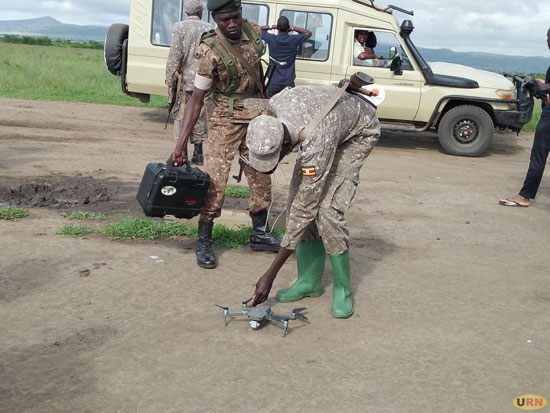
Fort Portal, Uganda | THE INDEPENDENT | Uganda Wildlife Authority (UWA) has increased security measures in Queen Elizabeth National Park. This follows the death of a British and South African tourist couple, along with their guide, who were allegedly killed by suspected ADF rebels two weeks ago.
The assailants also set fire to the tourists’ vehicle, which belonged to Gorilla and Wildlife Safaris.
During a tour of the park with UWA, military deployment was visible in isolated areas within the park. A joint team of crime experts from Uganda, Britain, and South Africa were also seen reconstructing the crime scene.
Pontius Ezuma, the Chief Warden of Queen Elizabeth Conservation Area, said that comprehensive security measures have been put in place. These include a permanent military presence in the park, increased police and military patrols on park roads, the use of drone surveillance cameras for aerial monitoring, community sensitization, and mobilization of locals as the first line of defense.
Ezuma also noted that the attack did not have a noticeable impact on visitor numbers in the park, which he said have remained steady.
“For instance, in the week of the incident, 932 visitors entered the park, including 604 foreign non-residents. In the 11 days following the incident, there were 957 visitors, with 632 being foreign non-residents,” he explained.
Bashir Hangi, the UWA Manager for Communication, explained that the introduction of drone surveillance systems will enhance park security and protect the integrity of wildlife habitats. He added that the drones also provide real-time information of what is happening in the different parts of the park, to determine suitable responses.
“A dedicated team of game rangers with specialized knowledge operates these self-driven surveillance cameras, particularly in hot spot areas where we must ensure that we occasionally fly these self-driven cameras. We also use them for animal management, because animals sometimes go out of the park and we are unable to tell their whereabouts until we receive reports of them having destroyed people’s property,” he said.
Hangi also said that drones have been deployed in five other conservation areas. He added that they plan to equip each of the 22 conservation areas with at least four surveillance drones.
Csillar Saxer, a tourist from Switzerland, admitted feeling worried about visiting the park, but with the vigilance of their guides and the visible military presence, she was confident of adequate security during her visit.
*****
URN
 The Independent Uganda: You get the Truth we Pay the Price
The Independent Uganda: You get the Truth we Pay the Price



Security should be tightened to avoid the same incidence in future.